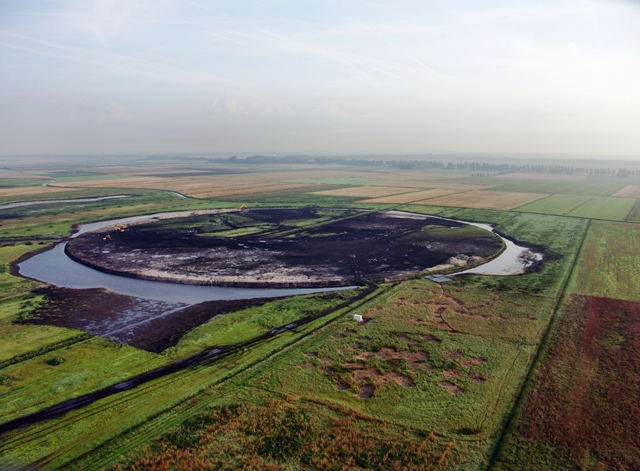Pulsars at LOFAR
The LOw Frequency ARray (LOFAR) is the first of the next generation of telescopes based in the Netherlands. It will operate in the relatively unexplored frequency range 30-240 MHz where pulsar's flux densities usually peak. Instead of using a conventional dish, LOFAR will combine data from ~10,000 small dipole antennas from all over Europe. The large collecting area from these dipoles will provide unprecedented sensitivity at such low frequencies, creating the perfect tool for Pulsar surveys. The LOFAR all sky survey is expected to uncover over 1,000 pulsars in the Northern Sky which will add significantly to the Galactic pulsar catalogue.

Aerial image of LOFAR test station currently being constructed in Exloo.
Copyright: ASTRON
The new increased sample of pulsars will add many new lines of sight through the Galaxy, which will be valuable for studying the ISM and Galactic magnetic field using dispersion and rotation measures. The newly discovered population will also be useful for studying pulsar birth rates, the velocities and distributions of pulsars and core collapse physics. It is also likely that several interesting new objects will be found, perhaps even the first pulsar-black hole binary which could be used to test General Relativity.
LOFAR will also be able to utilise long baselines (~100 km) in order to perform deep surveys with very high resolution. By looking at other galaxies with long integration times, it is likely that LOFAR will detect the first pulsar from another galaxy.
By: Tom Hassall (JBCA)


